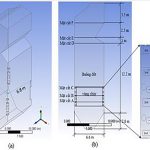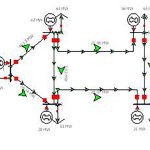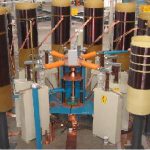A Case Study on Power Sector Restructuring in Vietnam
Dr. Nguyen Anh Tuan
Over the last decade, the rapid growth and expansion of Vietnam’s economy has dramatically increased the demand for electricity in the country. Faced with this challenge, Vietnam’s power industry has struggled to expand and improve the country’s power system, as evidenced by difficulties with developing new resources, enhancing high-voltage transmission lines, and reducing transmission and distribution losses.
However, in 2006, the government approved a roadmap for establishing a competitive power market and began to restructure the electricity sector, starting with establishing Vietnam Electricity (EVN) as a private holding company. This essay provides an overview of the key features of the restructuring and reform process of Vietnam’s power sector and then assesses both its success to date and the road ahead for continued progress. It argues that as a result of unbundling, competition in the electricity sector is increasing and the quality of power networks has improved.
Main Argument
ver the last decade, the rapid grwth and expansin f Vietnam’s ecnmy has dramatically increased the demand fr electricity in the cuntry. Faced with this challenge, Vietnam’s pwer industry has struggled t expand and imprve the cuntry’s pwer system, as evidenced by difficulties with develping new resurces, enhancing high-vltage transmissin lines, and reducing transmissin and distributin lsses. Hwever, in 2006, the gvernment apprved a radmap fr establishing a cmpetitive pwer market and began t restructure the electricity sectr, starting with establishing Vietnam Electricity (EVN) as a private hlding cmpany. This essay prvides an verview f the key features f the restructuring and refrm prcess f Vietnam’s pwer sectr and then assesses bth its success t date and the rad ahead fr cntinued prgress. It argues that as a result f unbundling, cmpetitin in the electricity sectr is increasing and the quality f pwer netwrks has imprved.
Plicy Implicatins
Vietnam has embarked n an ambitius lng-term prgram t cmpletely restructure its pwer sectr, which may span twenty years frm beginning t end. Hwever, critical strategic chices will need t be made ver the next few years t adhere t this prgram.
There are still many framewrk limitatins t establishing a perfect pwer market in Vietnam. Gvernment authrities shuld review their experiences with EVN t develp and priritize ptimal strategies fr further unbundling. This prcess shuld als take int cnsideratin the need t develp new sharehlder cmpanies that are financially viable and have the desire t ensure a slid fundatin fr future expansins f the pwer market.
Creating an effective pwer market cannt be dne thrugh unbundling alne and requires hlistic appraches t the energy sectr. Amng ther tasks, this will require refrming electricity tariffs, allwing utilities t have decent peratinal margins, and imprving and develping infrastructure t deliver electricity t custmers.







